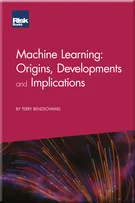Conclusion
Conclusion
Introduction: Money is information on the move
Trends in digital money
How digital money creates new operational risks
Operational risk and cryptography
Operational risks of digital money
Commercial bank digital money
Private digital money, including cryptocurrencies
Public digital money, including CBDCs
Impact of digitisation on operational risk management
Impact of digitisation on operational risk organisations
Impact of digital money and operational resilience on ORM processes and people
Impact of digitisation on operational risk management in the future
Theory of money
Information theory
Classical cryptography
Modern cryptography
Conclusion
Acknowledgements
Appendix 1: Significant contributors to information theory and cryptography
Appendix 2: Timeline of significant contributions to information theory and cryptography
Appendix 3: Relevant information standards
Appendix 4: High-level risk registers
Bibliography
This book is about the emergence of digital money, which differs from traditional money, particularly cash. Digital money is not held in a physical form, such a banknotes or coins, but instead is stored as information in computers somewhere – in fact, in very many places. Digital money is not new. It has been around almost as long as computers, from about the 1960s, really emerging into general use with ATMs in the 1970s. In the intervening half century, digital money has become the predominant means by which value is transferred between people and businesses.
Why has this happened? It is because IT/ICT has become an integral part of almost all aspects of the lives of most people around the world. Not everyone, of course, as there are still large numbers of people, particularly in developing countries, who are digitally excluded. However, strenuous efforts are being made to expand the use of low-cost telecommunications and low-cost smartphones to reach these people, and to allow them to better manage their essential resources, including money.
Some people claim that money itself has changed beyond its mere form, and that digitising money has somehow given money new, somewhat
Copyright Infopro Digital Limited. All rights reserved.
As outlined in our terms and conditions, https://www.infopro-digital.com/terms-and-conditions/subscriptions/ (point 2.4), printing is limited to a single copy.
If you would like to purchase additional rights please email info@risk.net
Copyright Infopro Digital Limited. All rights reserved.
You may share this content using our article tools. As outlined in our terms and conditions, https://www.infopro-digital.com/terms-and-conditions/subscriptions/ (clause 2.4), an Authorised User may only make one copy of the materials for their own personal use. You must also comply with the restrictions in clause 2.5.
If you would like to purchase additional rights please email info@risk.net











